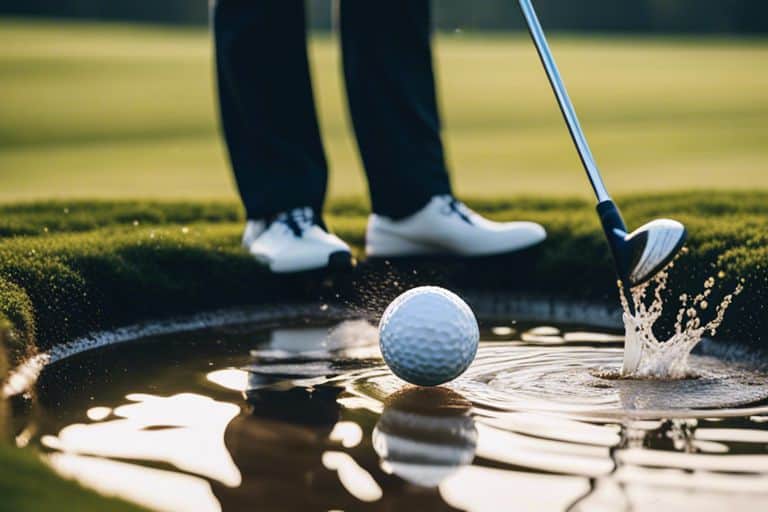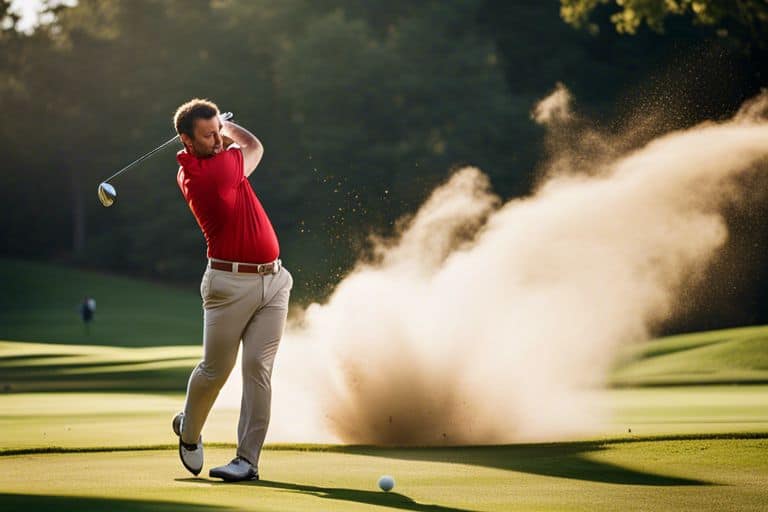How do you hit a "puddle shot" in golf?
Obtaining the perfect technique for hitting a “puddle shot” in golf is a skill that can elevate your game to the next level. The puddle shot is a difficult and risky shot that requires precision and confidence.
It involves hitting the ball out of a water hazard without getting your club wet. In this blog post, I will guide you through the steps to successfully execute a puddle shot and provide tips for mastering this challenging aspect of the game.
Preparing for the Puddle Shot
For golfers, facing a water hazard can be a daunting prospect. However, with the right preparation and technique, you can successfully navigate a puddle shot and keep your game on track.
Assessing the Water Hazard
When approaching a puddle shot, it’s critical to carefully assess the water hazard in front of you. Consider the depth of the water, the distance to the pin, and any potential obstacles in your path. Look for the shallowest point to enter the water, as this will give you the best chance of getting your ball back onto the fairway. Take note of any strong winds or other weather conditions that may affect your shot.
Choosing the Right Club
As I approach a puddle shot, I carefully consider my club selection. In most cases, I opt for a higher lofted club such as a pitching wedge or sand wedge. These clubs allow for a steeper angle of attack, helping to lift the ball out of the water and onto the green. Remember, the goal is not to hit the ball as far as possible, but rather to make a controlled shot that clears the hazard. Choosing the right club can make all the difference in successfully executing a puddle shot.

Execution of the Puddle Shot
Some golfers may find hitting a puddle shot challenging, but with the right technique, it can be mastered. The key to executing a successful puddle shot lies in a combination of stance, positioning, swing technique, and impact with the ball. In this chapter, I will break down the essential steps to successfully hitting a puddle shot, allowing you to navigate wet conditions with confidence.
Stance and Positioning
When preparing for a puddle shot, your stance and positioning are crucial factors. Ensure that the ball is positioned slightly back in your stance to promote a steeper angle of attack. This will help you avoid the danger of striking the ground too early and coming up short. The weight should be slightly forward, with your feet gripping the ground to maintain stability throughout the swing. Align your body to the target and slightly open the clubface to allow for a higher launch angle. By adopting the right stance and positioning, you can set yourself up for a successful puddle shot.
Swing Technique and Impact
As you approach the ball, take a controlled swing with a smooth acceleration through impact. Keep your hands leading the clubhead to ensure a clean strike on the ball. Focusing on a shallow angle of attack will help you avoid digging into the ground and creating unwanted resistance. When making contact with the ball, it is crucial to maintain an open clubface to encourage a higher trajectory and allow the ball to escape cleanly from the water. Keeping a firm but relaxed grip will help you maintain control throughout the swing, allowing for a precise and effective puddle shot.
I hope these insights will help improve your puddle shot technique and give you more confidence when facing wet conditions on the golf course.
Post-Shot Strategy
Your post-shot strategy is just as important as the swing itself. After hitting a puddle shot, it’s crucial to assess the outcome and make any necessary adjustments for future shots.
Evaluating the Outcome
After hitting a puddle shot, take a moment to evaluate the outcome. Consider the distance the ball traveled, the direction it went, and the impact the water had on the shot. This assessment will help you understand where you went wrong and how to improve your shot in similar situations in the future.
Adjusting Tactics for Future Shots
Based on your evaluation, adjust your tactics for future shots. If you noticed that the ball veered off to the right because of the water, consider aiming slightly to the left next time. Additionally, if you observed that the ball didn’t carry as far due to the water, you may need to use a higher loft club or increase the power of your swing to compensate for the water’s impact.

Practice and Proficiency
Lastly, becoming proficient in hitting a “puddle shot” in golf requires consistent practice and dedication. As with any other aspect of the game, the more you practice, the better you will become at executing this shot effectively.
Drills for Mastering the Puddle Shot
One effective drill for mastering the puddle shot is to practice hitting the ball out of various lies and stances. Set up different scenarios on the practice range, such as hitting from uphill, downhill, and sidehill lies. This will help you get comfortable and familiar with the different scenarios you may encounter on the course. Additionally, practicing varying distances and trajectories will help you develop a feel for the shot and become more adept at executing it under different circumstances.
Mental Preparation and Visualization
Mental preparation is just as important as physical practice when it comes to mastering the puddle shot. Visualizing the shot and its successful outcome before actually hitting it can help calm your nerves and instill confidence in your ability to execute the shot. I often visualize the ball landing softly on the green and stopping near the pin. This mental preparation helps me focus and maintain a clear mind during the execution of the shot.

Conclusion
With these considerations in mind, hitting a “puddle shot” in golf is a skill that requires a combination of technique and confidence. By adjusting your stance, ball position, and swing speed, you can effectively execute a puddle shot and overcome this challenging obstacle on the course. Remember to stay focused and commit to the shot, and with practice, you will be able to master this difficult shot and improve your overall game.






